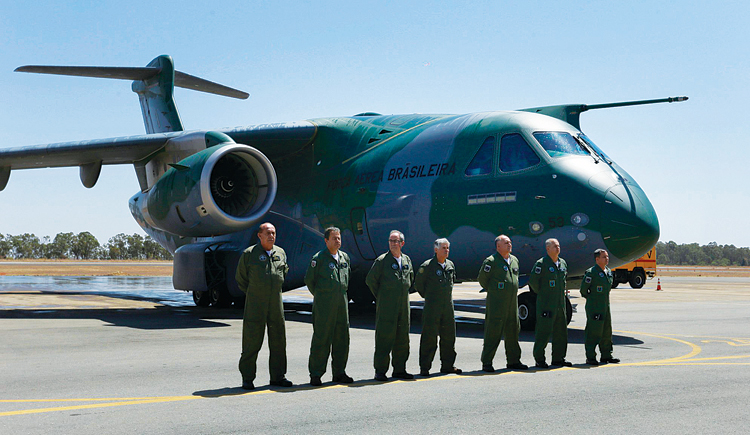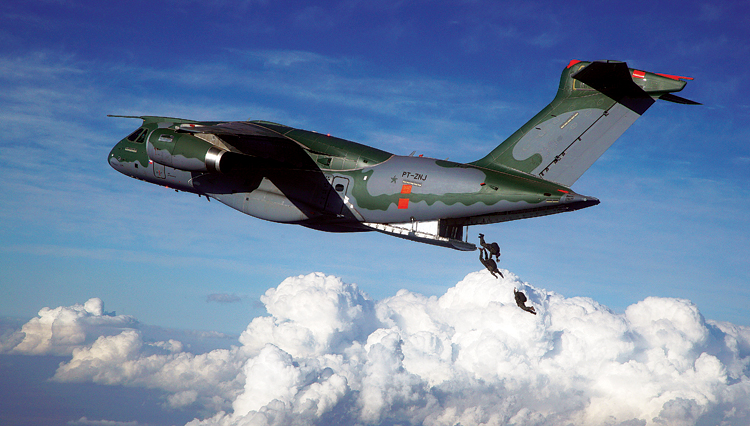INDIAN ARMED FORCES CHIEFS ON OUR RELENTLESS AND FOCUSED PUBLISHING EFFORTS

The insightful articles, inspiring narrations and analytical perspectives presented by the Editorial Team, establish an alluring connect with the reader. My compliments and best wishes to SP Guide Publications.

"Over the past 60 years, the growth of SP Guide Publications has mirrored the rising stature of Indian Navy. Its well-researched and informative magazines on Defence and Aerospace sector have served to shape an educated opinion of our military personnel, policy makers and the public alike. I wish SP's Publication team continued success, fair winds and following seas in all future endeavour!"

Since, its inception in 1964, SP Guide Publications has consistently demonstrated commitment to high-quality journalism in the aerospace and defence sectors, earning a well-deserved reputation as Asia's largest media house in this domain. I wish SP Guide Publications continued success in its pursuit of excellence.
- The layered Air Defence systems that worked superbly, the key element of Operation Sindoor
- Operation Sindoor | Day 2 DGMOs Briefing
- Operation Sindoor: Resolute yet Restrained
- India's Operation Sindoor Sends a Clear Message to Terror and the World – ‘ZERO TOLERANCE’
- Japan and India set forth a defence cooperation consultancy framework, talks on tank and jet engines
First KC-390 Delivered to Brazilian Air Force
The newly developed KC-390 undertook its maiden flight in February 2015, just six years after the award of development contract – a remarkable performance indeed by the Brazilian aerospace major, Embraer

September 4 this year will indeed go down in history as a “red letter day” for the Brazilian aerospace major Empresa Brasileira de Aeronáutica or Embraer, when it delivered the KC-390 to the Brazilian Air Force at a ceremony held at Anápolis Air Base. This is the first military transport aircraft manufactured by the company. So far the leading manufacturer of commercial jets especially in the regional segment, the launch of the KC-390 has been a major milestone both for Embraer as also for the Brazilian Air Force.
The KC-390 is a medium lift, high wing aircraft powered by two V2500 turbofan engines, is fitted with modern avionics and is equipped with a rear loading ramp. The aircraft is capable of carrying 80 fully equipped troops or 66 paratroopers. Alternatively, it can airlift 26 tonnes of cargo including armoured fighting vehicles and even helicopters. Apart from airlifting troops and cargo, the KC-390 is designed to carry out a variety of missions such as humanitarian assistance and disaster relief (HADR), medical evacuation, fighting forest fire as well as search and rescue. The aircraft is capable of aerial refuelling of other aircraft as well as can be refuelled in flight thus giving it the advantage of extended range. It has a maximum cruise speed of 870 kmph and can land and takeoff from short and unpaved runways. Equipped with an advanced self-defence system, the aircraft enjoys enhanced survival capability in hostile environment. The performance of the KC-390 has been substantially enhanced through a modern fly-by-wire control system with integrated technology that lowers the workload of the crew and increases the level of safety of its operation.

The KC-390 is the heaviest aircraft that the company has produced so far. In April 2009, the company was awarded a contract valued at $1.3 billion by the Brazilian Air Force for the development of a medium weight military transport aircraft powered by two jet engines. However, development of the KC-390 was undertaken as a joint project between the Brazilian Air Force and Embraer to set new standards of efficiency and productivity in its class as well as attaining the lowest life-cycle cost in the market. The newly developed platform undertook its maiden flight in February 2015, just six years after the award of development contract – a remarkable performance indeed by the Brazilian aerospace major Embraer and an example that ought to be emulated by the Indian aerospace industry. The KC-390 received type certification by the Brazilian civil aviation authority Agência Nacional de Aviação Civil (ANAC) in 2018. This was followed soon after by the grant of Initial Operational Capability (IOC). In 2014, the Brazilian Air Force entered into a contract with Embraer to purchase initially, a total of 28 of the newly developed aircraft. The Brazilian Army as well as the Brazilian Navy too have plans to acquire this platform in due course.
Even though at a nascent stage of development, Embraer has made concerted efforts to foray with the KC-390 into markets outside Brazil
Even though at a nascent stage of development, Embraer has made concerted efforts to foray with the KC-390 into markets outside Brazil. In August this year, the Portuguese government concluded a deal valued at $916 million with Embraer to purchase the KC-390 for the Portuguese Air Force. The first delivery of this platform is expected to take place in 2023. The initial order consists of five aircraft, a services and support package as well as a flight simulator. As is the case with the Brazilian Air Force, the KC-390 is being procured for the Portuguese Air Force to replace its ageing fleet of Lockheed Martin C-130 Hercules aircraft and its variants. “This contract strengthens the industrial partnership between Portugal and Embraer, contributing to the development of the engineering and aeronautics industry in Portugal,” said Jackson Schneider, CEO of Embraer’s defence business. What is noteworthy is that the contract with the government of Portugal was signed even before the induction of the first aircraft for the Brazilian Air Force. As per reports in the media, Portugal is likely to purchase another 32 KC-390 aircraft beyond the five already contracted for.
It is understood that talks with Hungary over a possible deal for the purchase of the KC-390 aircraft have been underway. Hungary is in the process of modernisation of its armed forces and acquisition of the KC-390 is reported to be under active consideration especially on account of its in-flight refuelling capability to support its fleet of combat aircraft. Embraer had dispatched the KC-390 that was being showcased at the Paris Air Show to Papa air base in Hungary after the show for a demonstration to Hungarian defence officials.
It is time that the Indian Air Force too seriously consider induction of the KC-390 in the future to bolster its dwindling airlift capability.





